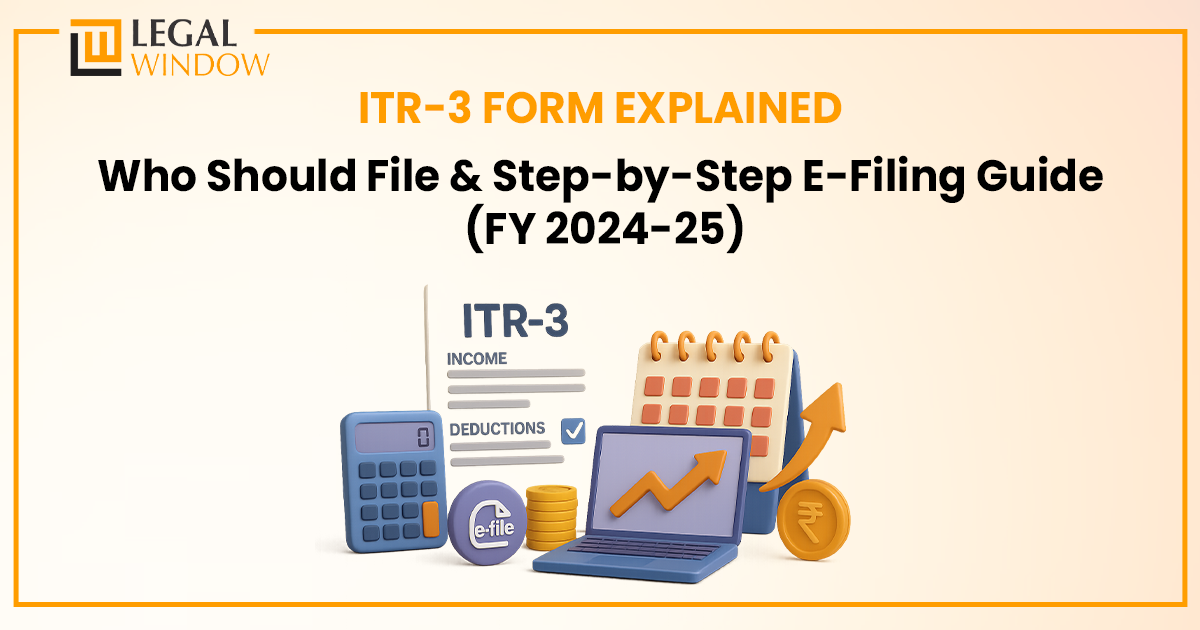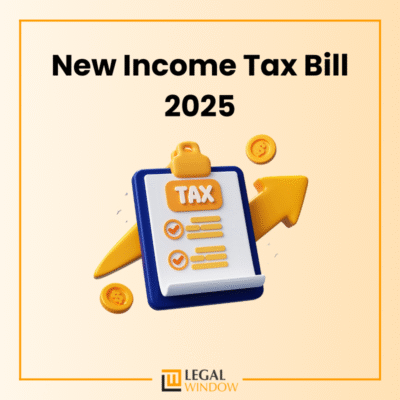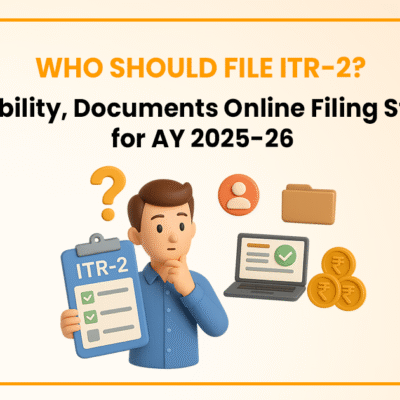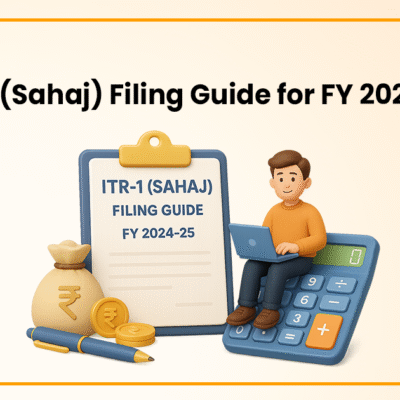ITR-3 Form Explained: Who Should File & Step-by-Step E-Filing Guide (FY 2024-25)
- June 25, 2025
- Income Tax

Introduction
ITR 3 Form is suitable for individuals and Hindu Undivided Family (HUFs) who earn income by a profession or business. This form is applicable for the assessment year 2025-26, corresponding to the financial year 2024-25.
Income eligible for ITR 3
- You run your own business or work professionally—whether or not your income needs a tax audit.
- You earn money from other sources too, like salary or pension, rent from house property, capital gains, or interest/dividends.
- You receive payments—such as salary, commission, or profit share—as a partner in a partnership firm.
Income Not Eligible to File the ITR-3 Form
Individuals and Hindu Undivided Families (HUFs) can file ITR‑3. Entities like companies, trusts, LLPs, or non-HUF firms do not qualify to file ITR 3.
If you do not earn money from a business, profession, or as a partner in a firm, ITR-3 is not for you. This includes people who only receive salary, pension, rent, interest, and small farming income and who are eligible to file ITR‑1, ITR‑2, or ITR‑4.
Due Date to file ITR – 3
You now have more time to file your ITR-3 return.
- If no tax audit is needed: The deadline has been shifted from 31 July to 15 September 2025. This applies if your business or professional income does not require an audit.
- If Audit Required: If your accounts must be audited under the law, the deadline remains 31 October 2025.
How to File ITR‑3 Online (FY 2024–25 / AY 2025–26)
- Sign in to the Income Tax e-Filing website.
- Visit the official portal of Income Tax e-Filing and sign in by using your PAN, password details, and captcha visible on the screen.
- Begin the Filing Process
- Select e‑File → Income Tax Return → File Income Tax Return from your dashboard.
- Choose the Right Year, Mode & Form
- Pick Assessment Year 2025–26 (for FY 2024–25).
- Select Online Filing.
- Choose ITR-3 based on your income sources—business or profession.
- Select Your Filing Category
- Mention your taxpayer type: individual or Hindu Undivided Family (HUF).
- If audited accounts are involved, indicate that under the audit-required section.
- Fill in Your Profile & Income Details
- Personal and bank details auto-fill from your profile.
- Enter income from all sources:
- Business or professional (with profit and loss data)
- Salary or pension
- House property
- Capital gains
- Other sources like interest, dividends, etc.
- Report Deductions and Payable Tax
- Add your deductions (like tax-saving investments, insurance claims, and loan interest).
- The portal calculates your payable tax—settle any due amount using the challan system.
- Review, Submit, and E-Verify
- Double-check all information before submitting.
- E‑verify the return using:
- Aadhaar OTP
- EVC (Electronic Verification Code), or
- Digital Signature (required if audited)
Tips for a Smooth Filing Experience
- Keep your financial statements, books, and audit report handy (if an audit is applicable).
- Check with your Form 26AS or the Annual Information Statement to confirm the TDS credits and tax payments.
- Take your time on complex sections such as listing multiple income sources, detailing capital gains, and entering TDS section codes.

Takeaways from ITR‑3
- Who must file ITR‑3?
Individuals or Hindu Undivided Families (HUFs) earning income through a business or profession—or those receiving profits as a partner in a firm—must use ITR‑3. - What income does it include?
It covers a wide range of incomes: business/professional earnings, salary or pension, income from multiple properties, capital gains, interest or dividends, foreign income/assets, and agricultural income above ₹5,000. - Audit or non-audit scenarios:
ITR-3 caters to both cases—whether your accounts need an audit under section 44AB or not. - Capital gains changes:
Gains must be separately reported based on whether they occurred before or after July 23, 2024, to comply with updated tax rates. Additionally, losses from share buybacks after October 1, 2024, are now reportable. - More precise deduction fields:
The form now requires details for each deduction—like policy numbers for insurance or loan account numbers for Section 24(b)—making the process more transparent. - TDS section codes are mandatory:
- You must specify the correct TDS section for every income source to support accurate tax credit claims.
- New income categories added:
New sections now include income from virtual digital assets (like cryptocurrencies) and a separate reporting segment under Section 44BBC for cruise business earnings.
LegalWindow.in is a professional technology driven platform of multidisciplined experts like CA/CS/Lawyers spanning with an aim to provide concrete solution to individuals, start-ups and other business organisation by maximising their growth at an affordable cost. Our team offers expertise solutions in various fields that include Corporate Laws, Direct Taxations, GST Matters, IP Registrations and other Legal Affairs.
Categories
- Agreement Drafting (23)
- Annual Compliance (13)
- Change in Business (37)
- Company Law (150)
- Compliance (90)
- Digital Banking (3)
- Drug License (4)
- FEMA (17)
- Finance Company (42)
- Foreign Taxation (9)
- FSSAI License/Registration (15)
- GST (124)
- Hallmark Registration (1)
- Income Tax (214)
- Latest News (36)
- Miscellaneous (170)
- NBFC Registration (8)
- NGO (18)
- SEBI Registration (6)
- Section 8 Company (10)
- Start and manage a business (27)
- Startup/ Registration (134)
- Trademark Registration/IPR (48)
Recent Posts
- Major Upgrade: Breaking Down GST 2.0 September 15, 2025
- New Income Tax Bill 2025 August 27, 2025
- ITR-3 Form Explained: Who Should File & Step-by-Step E-Filing Guide (FY 2024-25) June 25, 2025
All Website Tags
About us
LegalWindow.in is a professional technology driven platform of multidisciplined experts like CA/CS/Lawyers spanning with an aim to provide concrete solution to individuals, start-ups and other business organisation by maximising their growth at an affordable cost.










